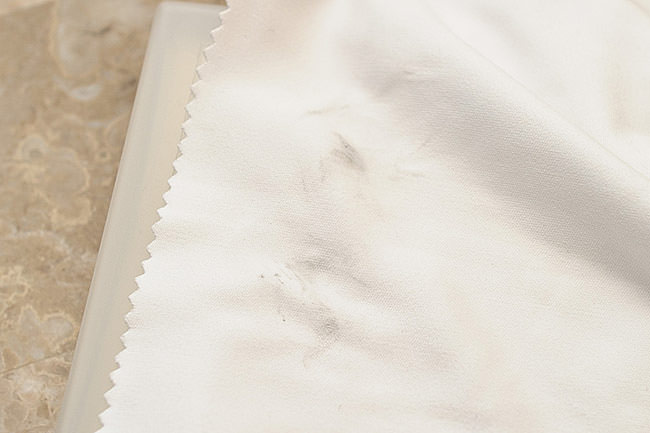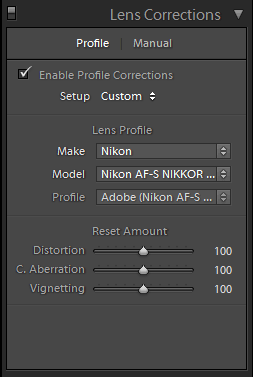So you have just received your brand spanking new lens that you have been dreaming of for a while. The first thing you probably do is mount it on your camera and take some sample pictures. But before you do that, it might be a good idea to do a couple of things that will not only help keep your camera gear clean, but also decrease your frustration level with your new lens in case it is defective. Below you will find the list of things I personally do after buying and receiving a new lens.

1) Inspect the lens
Most of the time, the lens you purchase is going to be brand new. However, there are cases when some retailers will try to sell a used lens as brand new. Ever since I switched to online purchasing from companies like B&H and Adorama, I have not had such a problem. Either way, it does not hurt to check if your lens is in good condition or not.
The first thing I do is inspect the lens mount (where the lens gets attached to a camera body) and see if I can find traces of lens use. Usually, you will see dirt on both the rear lens cap and on the lens mount or if the lens was cleaned, you should see some scratches on the metal mount. If everything looks good and there is some clean grease on both the mount and the lens cap, I then inspect the rear lens glass element and make sure that it is clean, without any scratches as well. Next, I move to the front of the lens and inspect the front glass element for scratches and dirt. After that, I use a flashlight to check if there are any large chunks of dust behind the front lens element. Small pieces of dust are never a problem, but if you see a piece of plastic or another large particle, you should return the lens for replacement immediately. Finally, check the lens barrel for damage and scratches.
2) Clean the rear mount and connectors
Every single lens that I have bought new had some grease (some had more than others) on the lens mount, which is normal. This grease is in fact added by the manufacturer to allow for smoother mounting / dismounting and to diminish the chance of metal pieces shredding off when they come in contact with the metal camera mount. However, in some cases there is just too much grease (especially on the lens contacts), which can potentially affect the communication between the camera and the lens when the grease gets mixed up with dust and dirt. Sometimes traces of excessive grease are evident even on the rear lens cap. If I see that, I usually remove the grease from the lens mount, its contacts and the rear lens cap. You can do this by using a microfiber cloth and some medical alcohol. Just put a drop or two of medical alcohol on the cloth, then gently wipe the rear lens mount and the contacts. Make sure not to touch the rear glass element while doing this. Next, clean the rear lens cap and use aRocket Blower to remove any particles left by microfiber cloth. Put the rear lens cap back on afterwards.
Here is the rear of a brand new Nikon 24mm f/1.4G lens:


And here is all the grease and small dirt specks that I removed from the rear of the lens and lens contacts (the little round balls):

This is quite normal for a new lens and if you see a little bit of grease, it is not an issue. However, if you see too much or if there are visible particles on the lens mount, it is best to remove them.
3) Protect the lens with a filter
I personally use UV/clear filters on every single lens I own for two main reasons – for protection and for easier cleaning. There were a few cases when I was glad that I used a filter – I managed to scratch my filters several times when I was walking through dense bushes and woods while scouting for photo spots with a camera on my shoulder (and yes, I did have the lens hood on the lens). I ended up replacing the scratched filter later, which was much cheaper than replacing the lens. As for cleaning, some lenses have “threaded” plastic right next to the rounded front lens element (for example Nikon 50mm f/1.4D), which makes it extremely difficult to clean the front lens element without leaving stuff on those threads. Once you put a filter on the front of the lens, you have just one straight area to clean and worry about .
I know that some photographers argue that using filters degrades image quality. That’s certainly true, but only for cheap filters. High-quality filters rarely affect the resolving power of lenses, as I demonstrated in this article. So as long as you use quality filters, you do not need to worry about image quality degradation. Pretty much every single picture I have taken so far was taken with filters (UV/Clear, Polarizing and Neutral Density) on my lenses.

If you are considering purchasing a filter, the last thing you want to do is spend your money on a crappy filter that will certainly impact your images. I personally use B+W filters (see Our Gear page for the types of filters I use) on my filters and although they are expensive, they are totally worth the price. Make sure to get Multi-Coated (MRC) F-Pro series – the above photo is for illustration purposes only. You certainly get what you pay for!
4) Test the lens
You have inspected, cleaned the lens and protected it with a filter – now it is time to get out and shoot! Mount the lens on your camera, then take it out for a real test. Go out for a walk in your neighborhood and take lots of pictures. Try focusing on your subjects from a close distance, then take some pictures of subjects far away, while playing with different aperture values. Pay very close attention to how you focus and take multiple pictures of the same subject while re-acquiring focus.
Once you get home, go through your pictures and see how you like the results. If it turns out that most of your images are out of focus, you might have a lens with a focus problem (or you just don’t know how to properly focus). While most manufacturers are pretty good with their Quality Assurance processes, there are some cases when a lens might need some tweaking and calibrating to focus better. Testing your lens for a back or front-focus problem is easy, but you will need to use a tripod and a calibration chart for accurate results. Check out my article on calibrating lenses using different calibration tools and software – it is a pretty detailed guide for fine-tuning your lenses. For a simpler and very inexpensive setup, you can use these instructions as well. If it turns out that you do have a problem, then call your lens manufacturer and tell them what’s going on. They will most likely ask you to send both your camera and your lens for calibration. Before you do that though, perform the test several times very carefully – don’t just send your gear if you are not 100% sure it has a problem.
If you are an advanced photographer, I would recommend to also test your lens for other problems such as: decentered lens elements, excessive chromatic aberration, distortion, focus shift and field curvature. Many of these are usually normal lens properties, so it is recommended to first check reviews and notes from other photographers to make sure that what you see is indeed abnormal.
5) Register the lens
Don’t forget to register the lens with Nikon, Canon, Sony or whoever else you bought it from. It is a good idea to register your lens right away, since manufacturers like Nikon require registration to get the 5 year extended warranty (although they will still accept the lens for service if you can show them the original receipt and proof that you bought it from a Nikon authorized dealer). In addition, if a lens is recalled for whatever reason, you will get notifications from your manufacturer and if you need to send it for repair, tech support will be able to help you quickly. If you have a Nikon lens, visit this Product Registration page or simply go to http://support.nikonusa.com, then click on “Service & Support” -> “Product Registration”. If you have never registered anything with Nikon, now might be a good time to register your gear. I have every single Nikon camera, lens and accessory registered with Nikon USA. Once you register, you will be able to see every Nikon gear you own on one page, along with serial numbers.

6) Take it for a ride!
Every lens is different and requires some learning and getting used to. You have played with the lens and shot some sample pictures, now you need to take it with you on a real photo shoot. If you have an upcoming event, a vacation or a real photo shoot for your photography business, try to use your new lens as much as you can. Not only will you learn how to use it better, but you will also find out what its limitations are (unfortunately, no lens is perfect) and when to use its best. When I do my lens reviews, I always try to take them on real photo shoots, so that I can get a good feel on their performance. Shooting test charts and brick walls just won’t produce great pictures!
The above picture was taken while I was testing the Nikon 24mm f/1.4G lens.
7) Correct lens problems in Lightroom/Photoshop
Like I have pointed out above, no lens is perfect. Some lenses have problems with too much vignetting while others have issues with chromatic aberrations and distortion. The good news is that most lens problems can be dealt with in post-processing today. The latest version of Adobe Photoshop Lightroom, for example, comes with a cool feature called “Lens Correction“, which automatically fixes distortion, chromatic aberration and vignetting issues for known lenses (see screenshot below). If your lens is not supported, you can manually correct those problems in one image, then copy-paste the settings to all other pictures taken with the same lens.



0 comments: